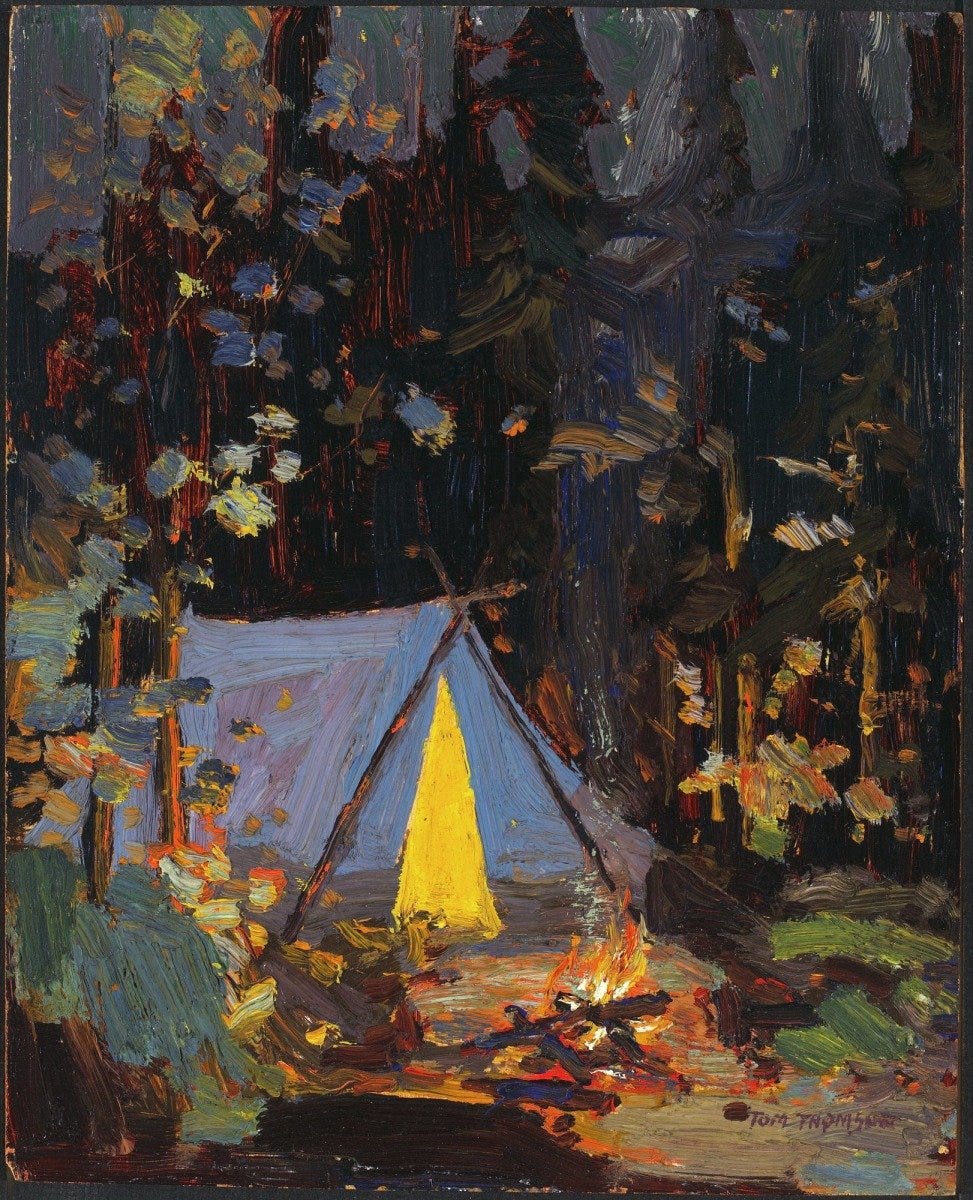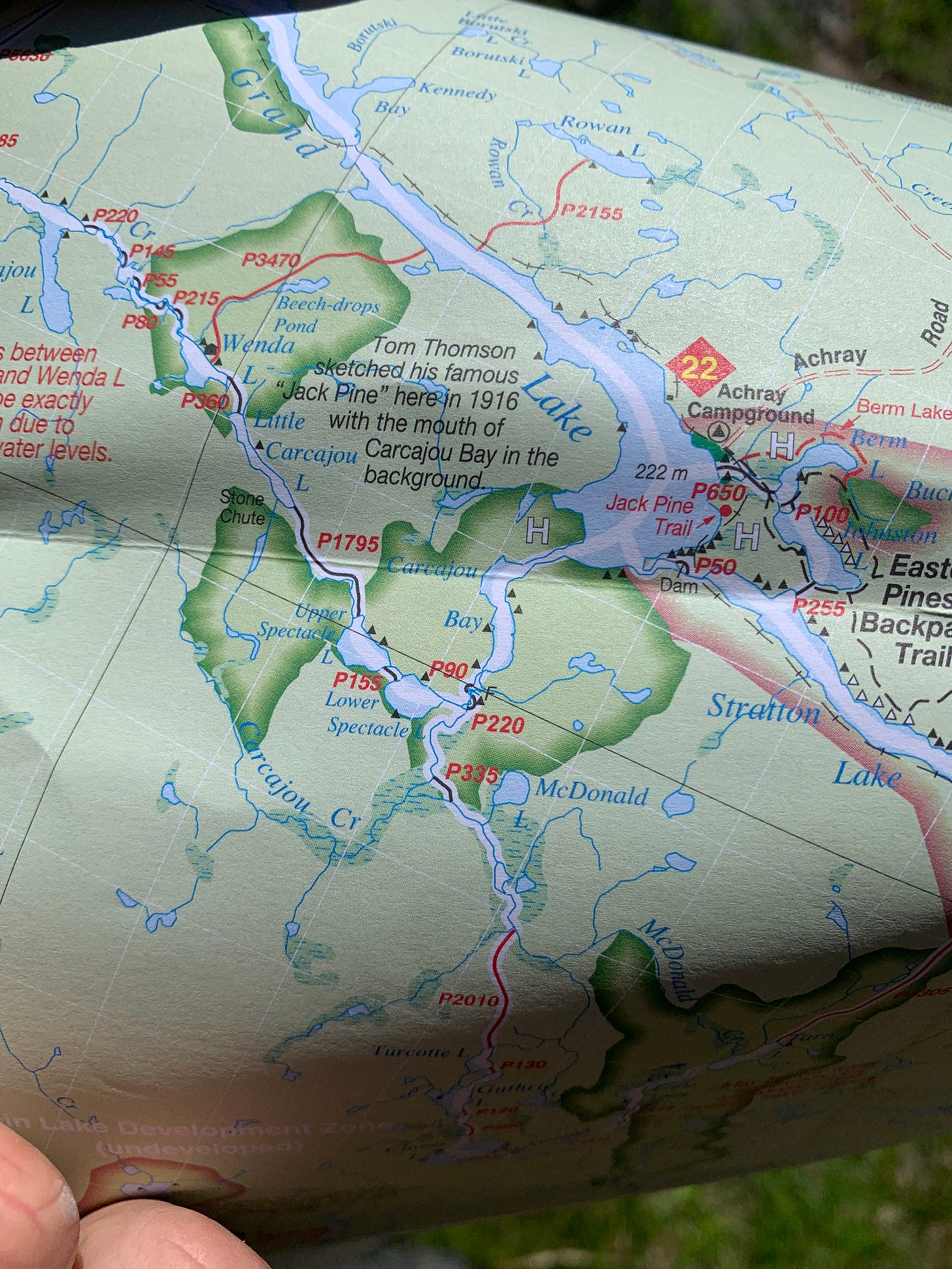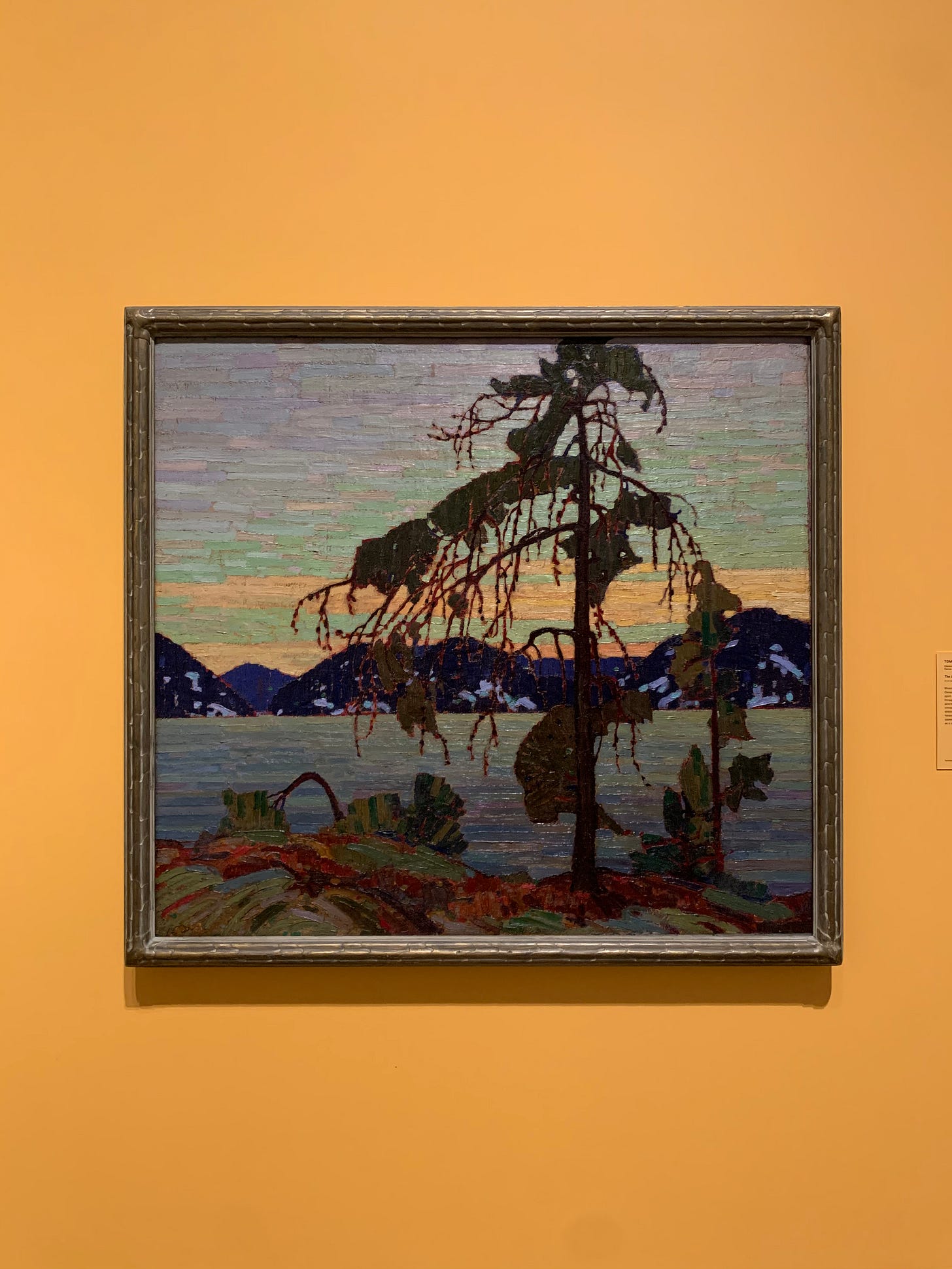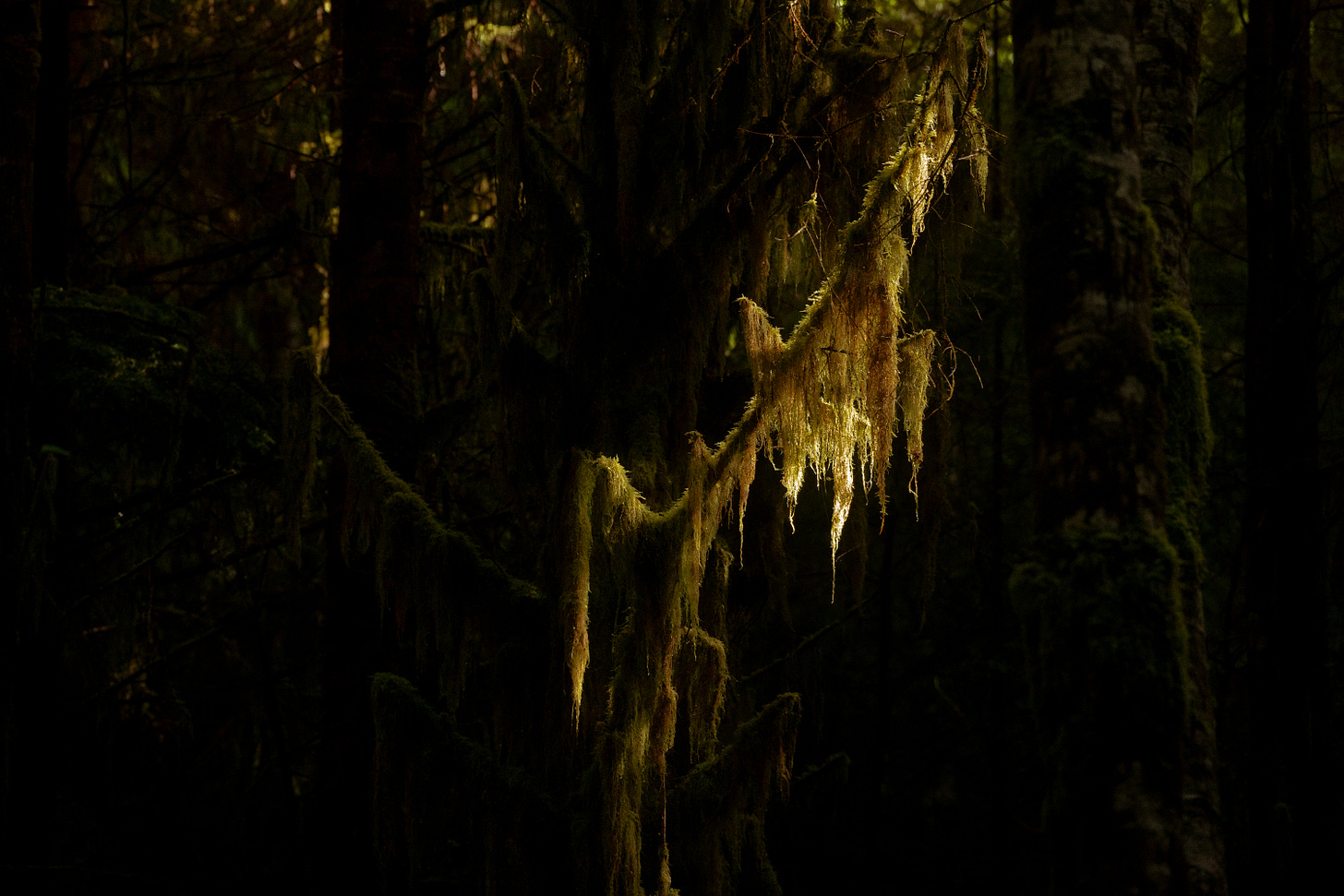Why Art Needs Time (and So Do We)
A canoe, Canadian art history, Algonquin Park, the sounds of nature
"The best I can do does not do the place much justice in the way of beauty." — Tom Thomson
A cerulean sky and a light breeze greet us as we glide our quintessential red canoe into the calm water. I’ve packed a book for the day, Corey his fishing gear. It’s his birthday, and the best way we could imagine spending it is here, on the water, in quiet celebration.
Three hours outside of Ottawa lies a lake that, beautiful as it is, might not stand out among the many in Algonquin Park. But if you know what to look for, you can step into a moment of Canadian art history.
It’s easy to feel detached from art these days, to forget the human behind its creation. We scroll past images, skipping through works with little thought. We consume without savouring the effort, the thought, the process that went into them.
We no longer need to visit galleries or attend shows to see great works. Art is everywhere and nowhere, instantly accessible yet strangely distant. Much like how visitors are surprised by the small scale of the Mona Lisa when they see it in person, many iconic pieces lose their impact when reduced to pixels. The depth and texture of a painting, the subtleties of brushwork, can’t be conveyed through a screen. Rothko’s colour fields, for instance, may seem flat or lifeless in photos, yet in person they are described as “luminescent and organic, and their soft, blurred edges exuded life force in the emotions they described.” Can that be felt through a swipe on a phone?


As Corey and I paddled, absorbing the calm, I couldn’t help but think of Tom Thomson doing the same. This wasn’t just a casual outing; it was an opportunity to connect with the land that inspired him. Thomson lived in this park from spring to fall in a while silk tent, paddling in his cedar-strip canoe, creating new scenes daily with oil on wood panels. He wasn’t merely a painter; he was a voyageur, an outdoorsman drawn to the wild.
We navigated to the spot marked on our map as the location where The Jack Pine was sketched. As we approached, we eased our paddles and allowed ourselves to drift, gently bobbing on the water. This was the very place where Thomson had created his iconic work. Sitting there, the landscape seemed to pulse with history, and I understood why he had devoted so much of his life to capturing its beauty.
I have seen The Jack Pine and Thomson’s many oil sketches at National Gallery in person. Comparing the landscape to the final painting was an experience unlike any other—a connection between the real and the rendered, between nature and art. It was a stark contrast to the way we typically experience art today.
We’ve become accustomed to beauty on demand. A few taps, and we’re flooded with images. As an artist, I’ve felt the pressure of this rapid consumption. It’s easy to believe that the speed at which art is consumed should dictate the speed at which it’s created. But art is not fast. The process of creating something meaningful takes time, and it deserves to.
When we rush through the consumption of art, we risk missing its essence—the inspiration, the emotion, the story behind it. Thomson spent years immersed in the wilderness, sketching, observing, living. His work reminds us that creativity is a slow, deliberate act. Imagine if we approached our own work this way, allowing ourselves the space to create without haste, to craft hundreds of sketches before arriving at something we’re truly proud of.
And when we engage with someone else’s work, what would it feel like to take our time? To lean in, to slow down, to absorb the details and uncover the story within? Art has the power to transport us—not just to a place, but to an emotion, a thought, a shared human experience. It deserves more than a passing glance or a snap judgment.
Art is more than brushstrokes or a shutter click. It’s more than words on a page. It is an expression of humanity, and as such, it calls for thoughtful engagement. When we pause, when we allow ourselves to truly see and feel, we honour both the artist and the work—and perhaps, in doing so, we reconnect with something deeper in ourselves.
Watch and Learn: Tom Thomson: North Star with Ian Dejardin - Colour
Listen: Earth.Fm
While writing this short essay I listed to Earth.fm to help me stay connected to the experience of being in nature.
About: Earth.fm is a non-profit, free repository of 900+ pure, immersive natural soundscapes from around the world.
Personal Work
Hey, you made it to the end! I have a little secret for you. On the trip I wrote about, we had a big scare on the way home. As Corey carried the canoe back to the van, we noticed that Indy seemed to have gotten a sting on his snout. As we walked the couple kilometers back to the vehicle, it kept getting worse. By the time we hit the road, we knew it was serious. We had no cell service and sat in silence as we raced back, hoping the allergy medication we gave him would be enough. Luckily, it was. Once all the swelling went down, Indy sported jowls for a couple of days. We now make it a rule to carry a little peanut butter packet and allergy meds, just in case, when out adventuring.








